Key takeaways:
- Breakdancing events vary in format, influencing the atmosphere and level of competition, from relaxed cyphers to intense competitions.
- The diverse nature of events fosters community, creativity, and connections among dancers, enhancing personal growth and collaboration.
- Experiences at events highlight the importance of audience engagement and the transformative power of stepping out of one’s comfort zone.
- Each format teaches distinct skills, with informal settings emphasizing spontaneity and formal competitions focusing on technical precision.
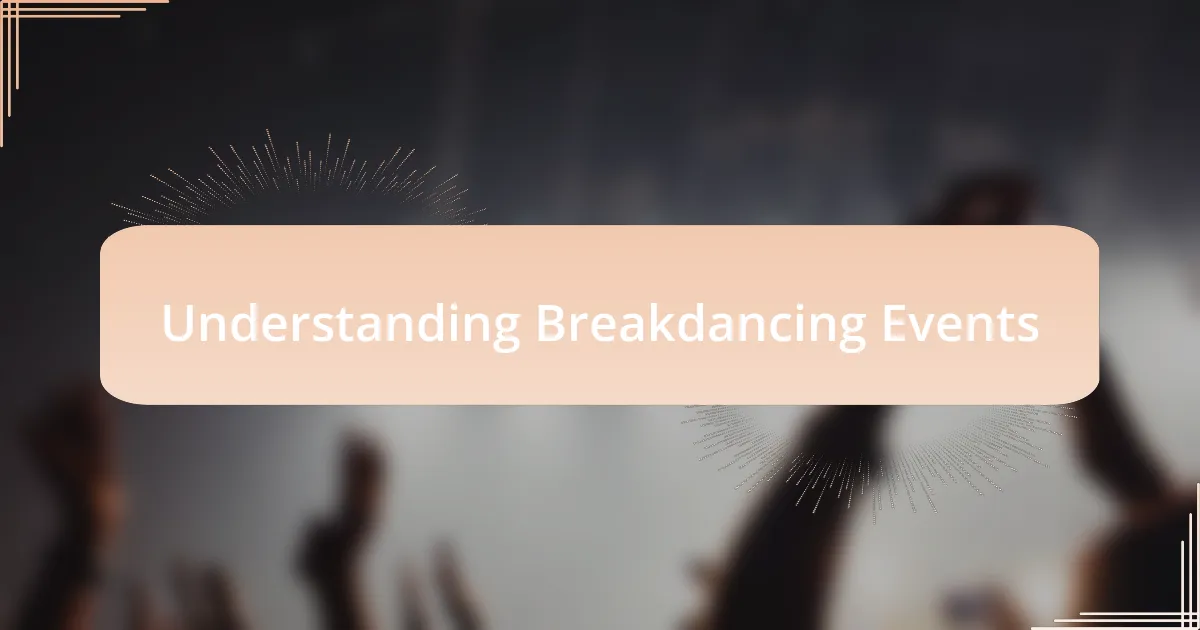
Understanding Breakdancing Events
Breakdancing events are vibrant celebrations of culture, creativity, and competition. I still remember my first jam, standing amidst the pulsating energy and electric atmosphere, where everyone seemed united by a shared passion. Isn’t it incredible how a few beats can bring together so many different people, all expressing themselves through the same art form?
Each event can vary significantly in format, from informal street battles to large-scale competitions with intricate judging criteria. I’ve participated in events where the vibe was relaxed, allowing for spontaneous moments of collaboration and sharing, while others felt intense and fiercely competitive. Have you ever felt the adrenaline rush when you step onto the dance floor, knowing that every move counts? It’s both exhilarating and daunting.
Understanding the structure of these events can enhance your experience, whether you’re a participant or a spectator. I’ve found that some audiences cheer based on style, while judges often focus on technical precision and originality. This mix of perspectives can create a dynamic environment, but it also raises questions about what truly defines success in breakdancing. In my opinion, it’s about finding your unique voice while embracing the art form’s diversity.
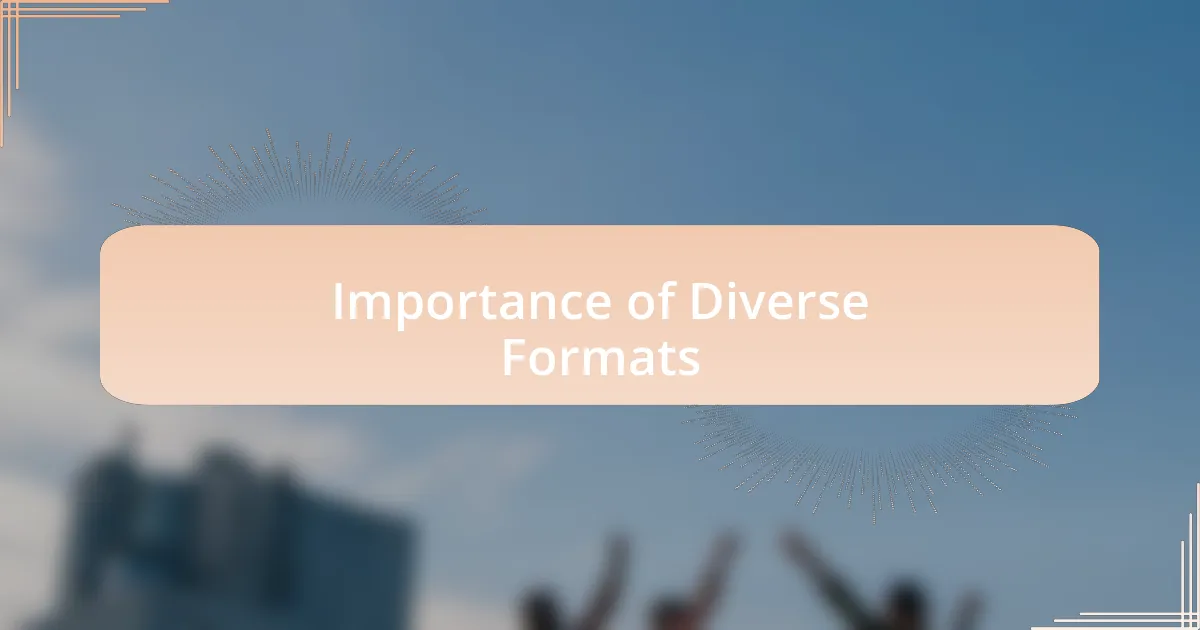
Importance of Diverse Formats
Diverse event formats are crucial in showcasing the multifaceted nature of breakdancing. For instance, I once attended an informal cypher where everyone took turns dancing and exchanging moves on the spot. The energy was contagious, and it felt like a safe space to experiment and evolve, don’t you think? This kind of format emphasizes inclusivity, fostering relationships among dancers of varying skill levels.
In contrast, larger competitions often bring a different kind of thrill. I vividly recall facing off against seasoned dancers at a judged event, where the stakes felt high and the pressure was palpable. It taught me not only about my own abilities but also about resilience. How often do we get to push our limits in such a structured yet intense environment? It’s these experiences that help us grow, both as dancers and individuals.
Moreover, varying formats allow for a richer appreciation of stylistic diversity within breakdancing. I’ve learned that a relaxed event might highlight creativity and personal expression, while a formal competition focuses on technical skills and choreographed routines. Don’t you feel that each format has something unique to offer? Embracing these differences makes our community stronger and more vibrant.

Overview of Breakdancing Community
The breakdancing community is a vibrant tapestry of diverse backgrounds and experiences, connected by a shared passion for dance. I often find myself reflecting on how this culture has evolved, both locally and globally. Each dancer brings unique flair to the floor, contributing to an atmosphere where collaboration thrives. Have you ever noticed how a different style or move can completely transform the vibe of a session?
What stands out to me is the sense of belonging that permeates different gatherings, whether it be underground jams or dance battles. I remember my first major competition, standing nervously backstage, surrounded by so many skilled dancers. That moment taught me something invaluable about trust—trust in myself and in the supportive nature of the community. It’s fascinating how these spaces can create both friendly rivalries and lasting friendships.
Additionally, the breakdancing community is a living archive of history and innovation. From the original pioneers to the new generation of dancers, each story adds depth to our collective narrative. I’ve found inspiration in listening to how others interpret their experiences and challenges through movement. It really highlights the beauty of our art form—don’t you think that every spin and freeze tells a story worth sharing?
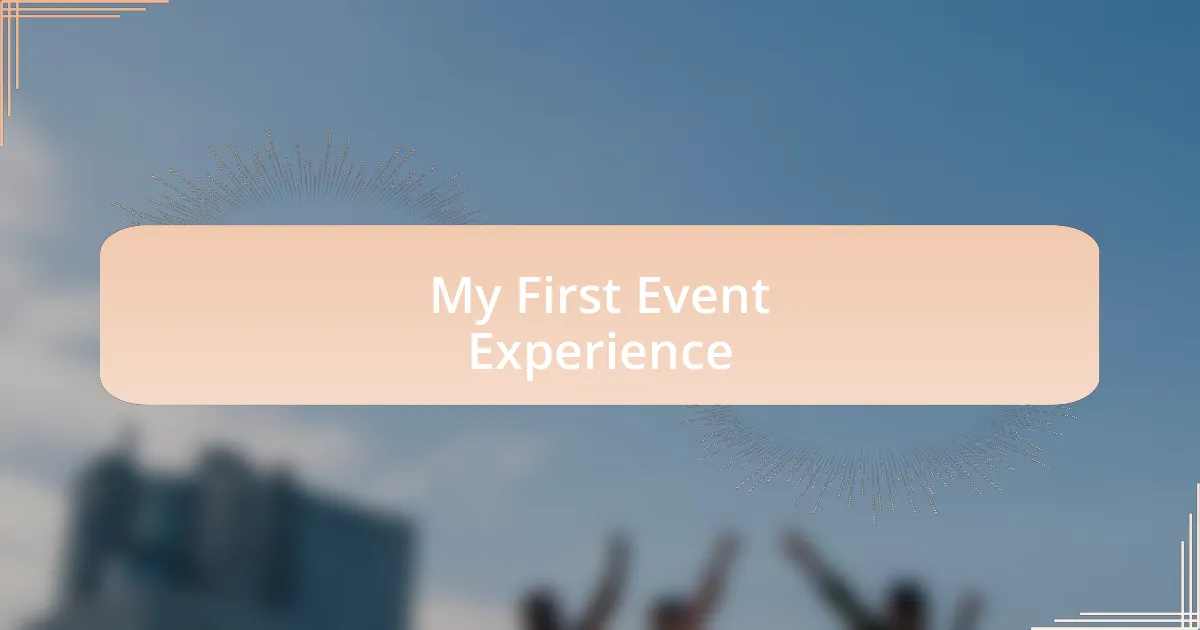
My First Event Experience
I still vividly remember my first event experience, the energy in the room was palpable as I stepped onto the dance floor. I was a mix of excitement and anxiety, watching seasoned dancers navigate the space with such fluidity. The sounds of the music resonated through me, sparking a fire that I didn’t even know I had.
When it was finally my turn to showcase my moves, I felt like the world had paused. For a few minutes, I was lost in the rhythm, almost as if it had become a personal conversation between my body and the beats. I remember feeling the weight of the crowd’s expectation, but in that liberating moment, all that mattered was expressing who I was through dance.
After my performance, the camaraderie among the dancers was remarkable. My heart warmed as I received encouraging nods and high-fives from fellow competitors, showing that no matter the result, we were all part of the same family. Has any moment made you feel so connected to a community? That experience solidified my love for breakdancing and showed me the unbreakable bonds that flourish even in a competitive atmosphere.
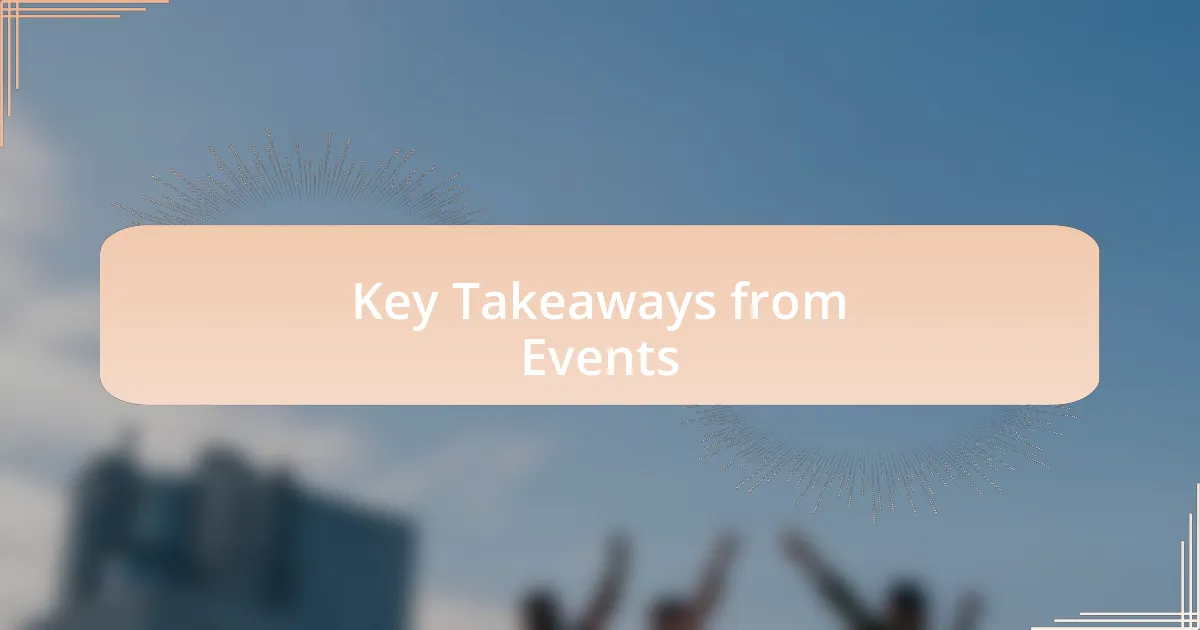
Key Takeaways from Events
Attending various events has taught me that every format has its unique vibe. For instance, I remember a jam session where the atmosphere felt more spontaneous than in formal competitions. The dancers were in sync not just with the music, but also with each other, leading to a freer exchange of styles and techniques. Isn’t it fascinating how the format can shape creativity and collaboration among artists?
Another key takeaway is the importance of diversity in event formats. I’ve participated in everything from battles to showcases, and each has offered distinct lessons. For example, battles require quick thinking and adaptability, while showcases have taught me the value of polish and presentation. Have you ever noticed how the approach to performance shifts depending on the setting? It’s something that’s truly enlightening.
Lastly, I’ve found that the connections made at these events extend beyond the dance floor. One evening, after a local competition, I ended up in a deep conversation with a fellow dancer about our journeys. Those shared experiences made the competition feel secondary to the friendships formed. How often do you find that the greatest victories come from the connections with others, rather than just the accolades?
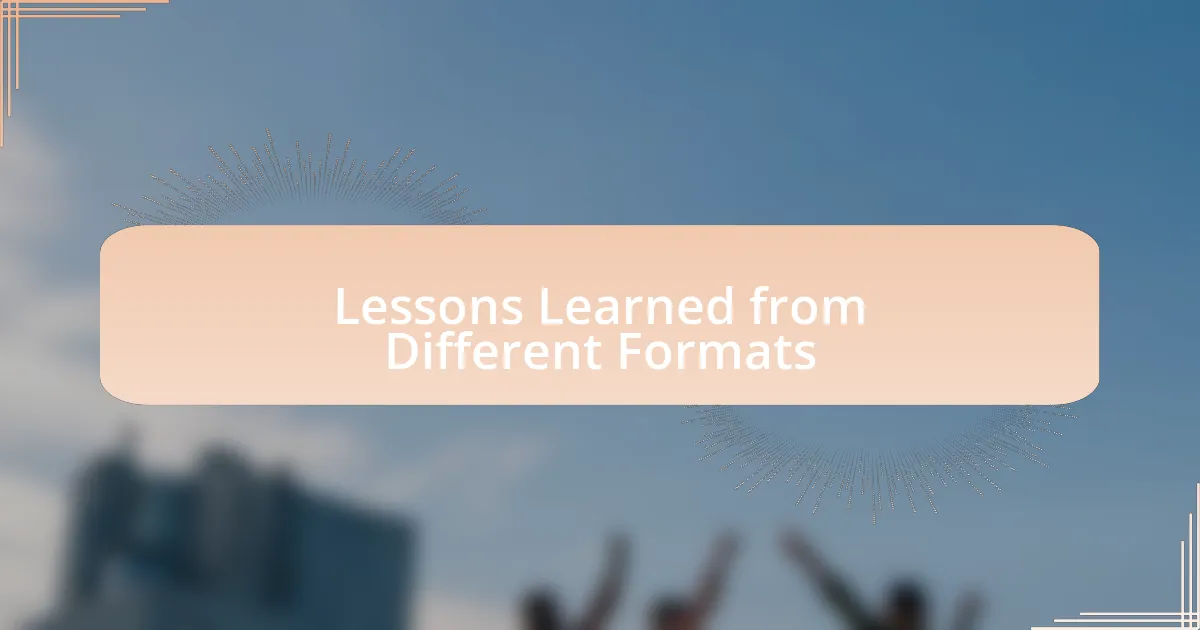
Lessons Learned from Different Formats
Participating in different event formats has really driven home the idea that each one teaches a different set of skills. I remember a small community battle where the dancers were so close-knit that you could feel the support in the air. It was exhilarating, but also humbling; knowing that we weren’t just competing against each other but lifting one another up. Doesn’t that shift your perspective on competition?
Moreover, each format has broadened my understanding of audience engagement. At one memorable showcase, the energy was electric, and you could see how much the crowd swayed with the dancers. It reminded me that a performance isn’t just about the dancer; it’s about the connection with the audience. Have you ever felt that pulse of energy between yourself and the crowd during a performance? It’s a magical dance in itself.
Finally, the spontaneity of a freestyle session offers lessons that are hard to capture elsewhere. I once jumped into a cypher on a whim, and as I let go of my inhibitions, I realized the beauty of improvisation. It’s a reminder that sometimes the most profound moments come when you step out of your comfort zone. Have you ever taken a leap like that? The rewards can be utterly transformative.